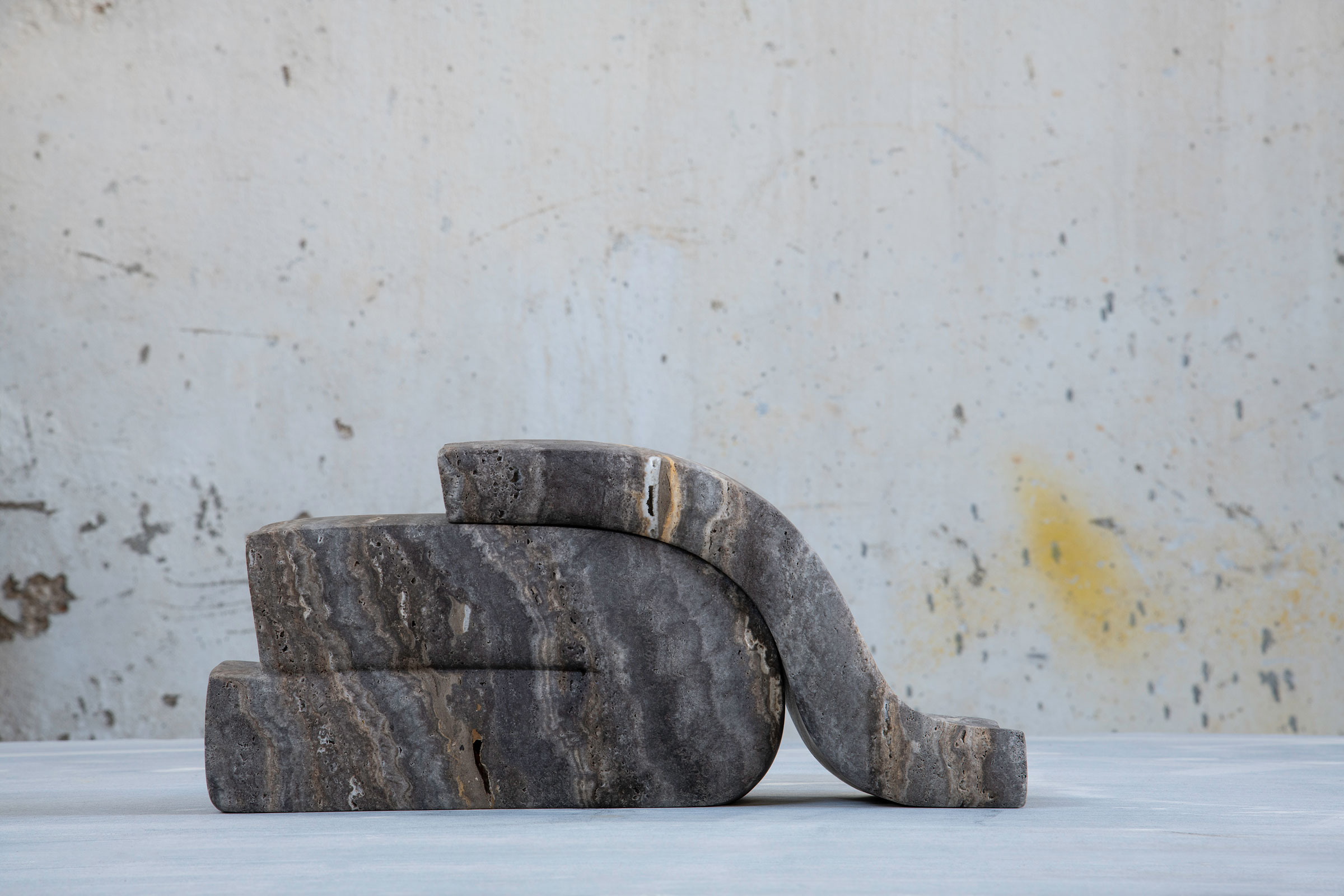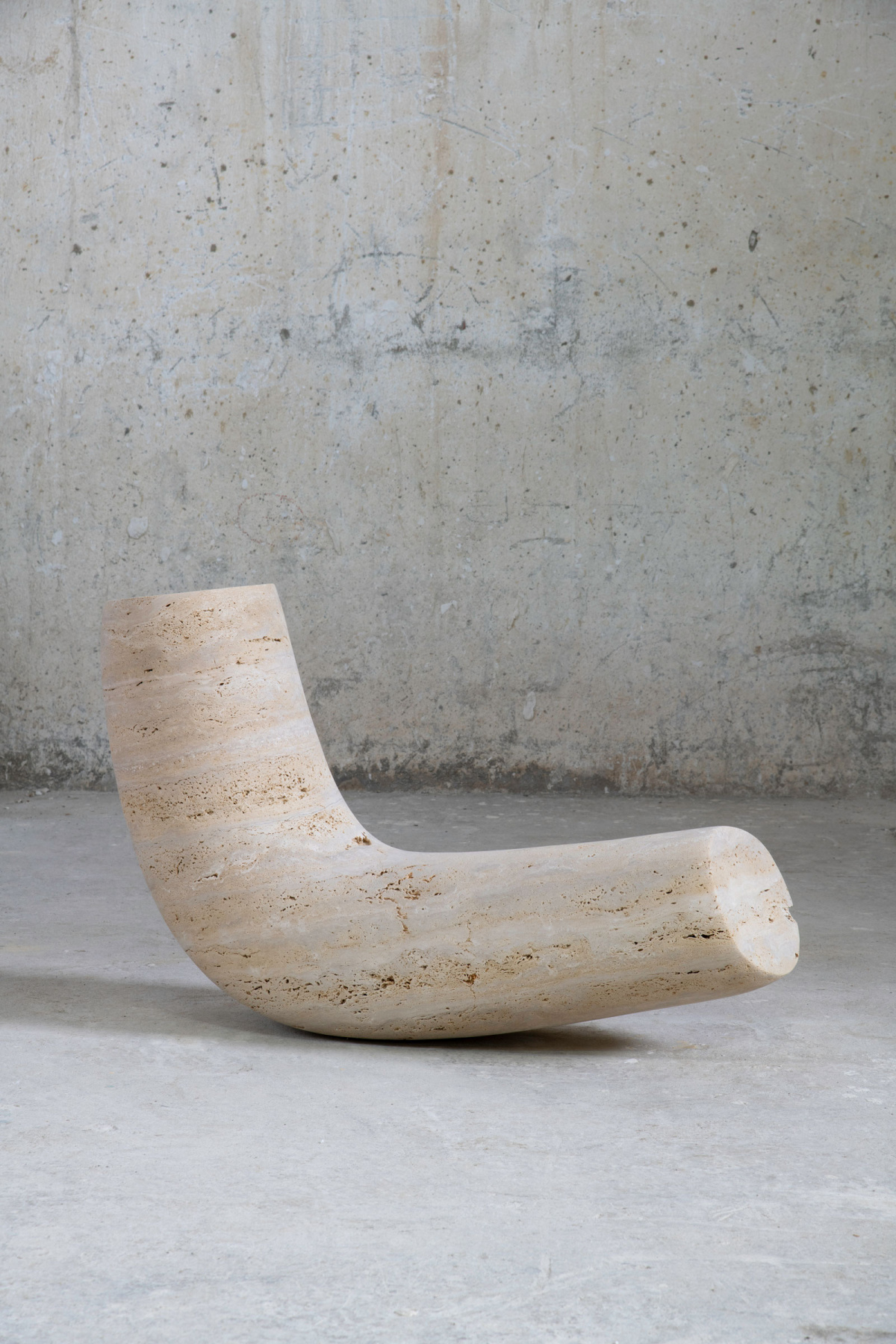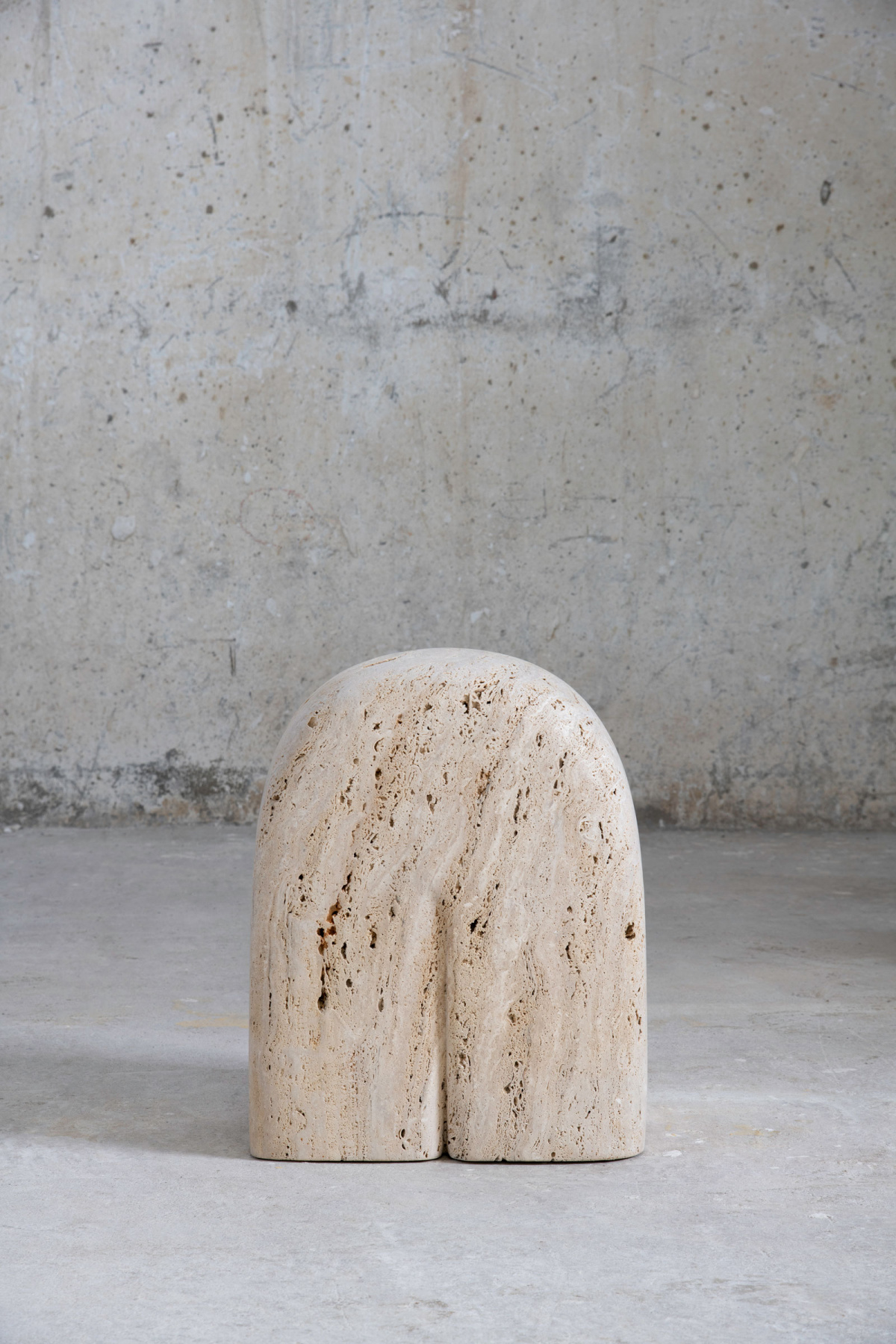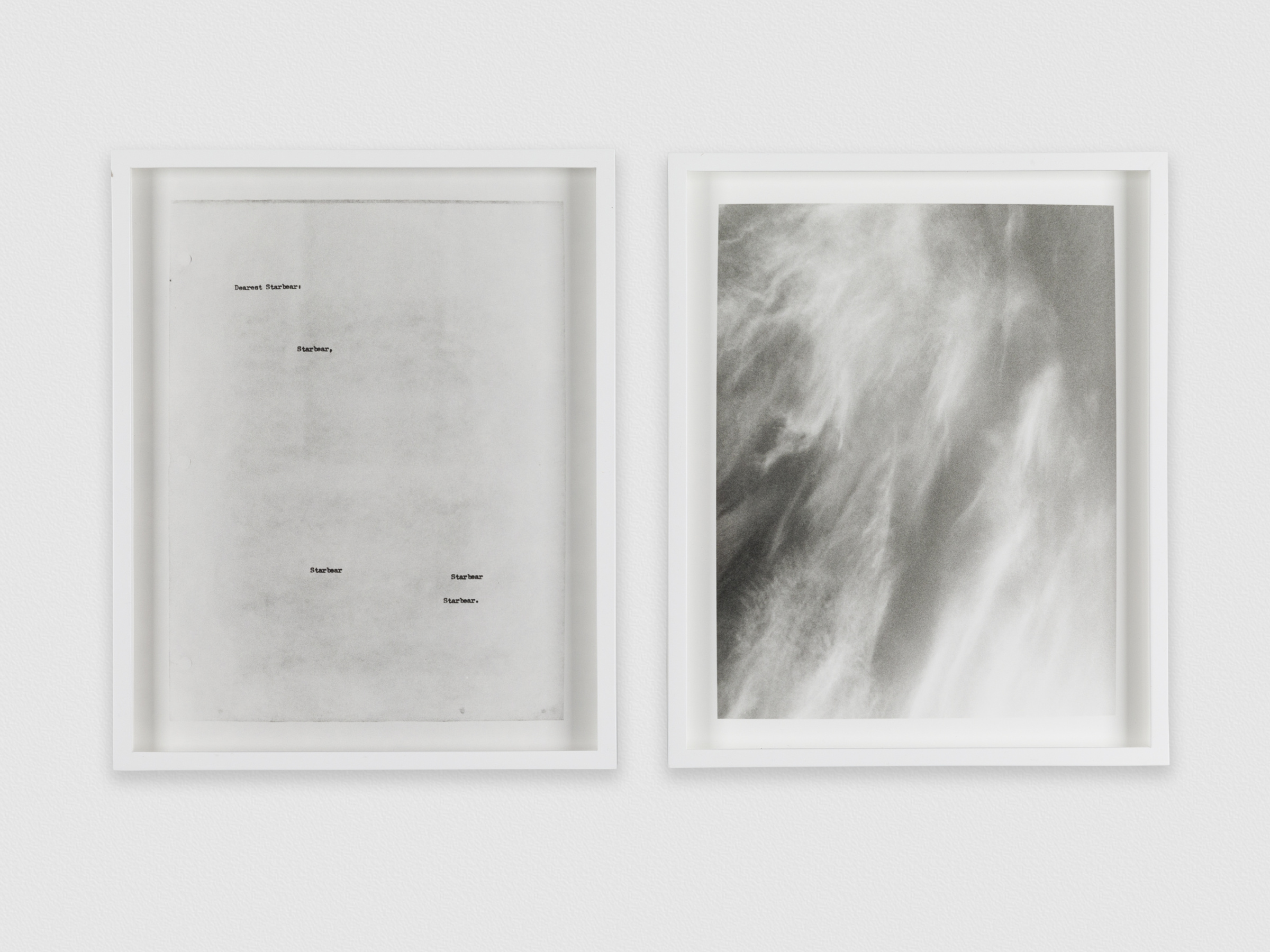It’s early morning on the northwest side of Amsterdam when Najla El Zein packs up her bicycle and pedals the short distance from her home to her sculpture studio. There, inside the airy space, she is making sense of the world with her hands in clay, making models for future stone sculptures she will produce in Beirut. “The story is different every time,” Najla tells me of her process.
Najla uses the clay to formalize her ideas. “The models take me out of any constraints. I try to balance function, materiality, shape, space, proportion, mass, and void in a way to really tell the story. Sometimes it’s something about me that I am not able to understand or express. This is my way of understanding and analyzing.” Today she is working on a big secret project—a public commission she can’t say much about. “Let’s just say it’s a really exciting project with a scale I’ve never worked with before.”
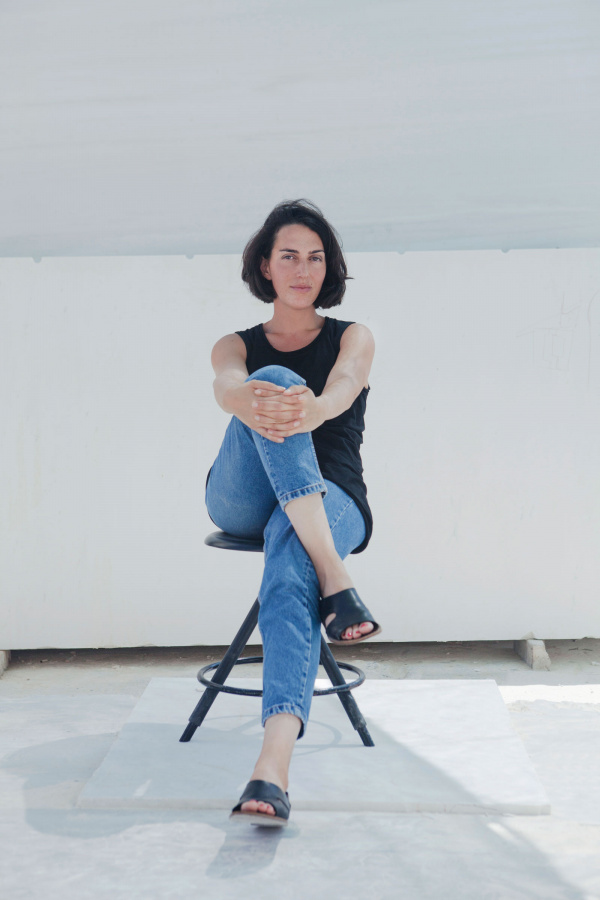
Najla El Zein’s love of art is innate, and she has fond memories of traveling with her parents to antique markets in Paris where she grew up, always in search of the best mid-century pieces. “I think I was born a person who found a way to express herself differently. My work and my art is a way for me to think and put things in order.”Photo by Karen & Josette
When I call Najla she has spent all day immersed in the world of her art. When she hangs up the phone, she’s off to return to the world of family. It’s around 3:30 in the afternoon in Amsterdam, and she has to head out to pick up her young kids (ages 2 and 5) and start dinner soon. She’s also battling a bit of a cough, but she still finds time to chat.
About every six weeks Najla travels from Amsterdam, where she moved in 2019 with her architect husband, to Beirut, where she works in a stone atelier to bring her models to life. She spent much of her time growing up in Paris, where she graduated from Ecole Camondo with degrees in product design and interior architecture. Ten years ago she knew little about working with stone, but once she started working with craftspeople who did, there was no turning back.
- “Seduction, m.” Photo courtesy of Najla El Zein
- “Seduction, f.” Photo courtesy of Najla El Zein
“I started really being interested in stone sculpting. It was a true revelation to my work and my approach. Now it’s addictive, and the pieces are getting bigger and bigger,” she laughs. Najla produced some of the bigger pieces she’s known for today—her “Distortion” series and “Fragment” series among them—about four years ago.
For Najla there is beauty in the unknown, as stone takes her down unexpected paths. “Stone leads you to where you need to go,” she says. “It’s collaborative. It’s a material that’s alive—it has cracks and veins and different grains and different density. Depending on the stone and what you get from the block, you adapt. There’s always space for pushing the material and pushing the design, and I really love that. It’s a very spontaneous way of working.”
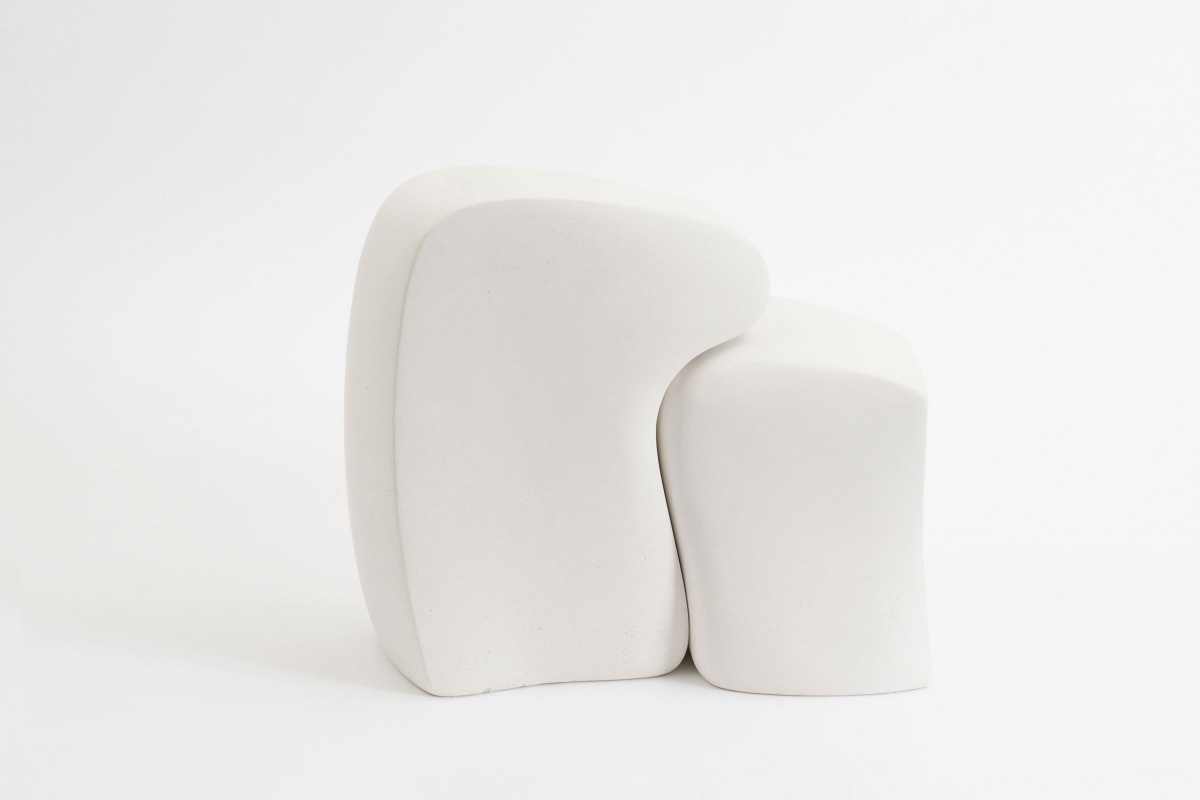
Najla made “6.07” after an explosion in Beirut claimed hundreds of lives. All profits went back to local organizations working to help people in Lebanon. At right, “Distortion.” Photo courtesy of Najla El Zein
When an unexpected explosion happened in Beirut in August 2020, killing more than 200 people and leaving an estimated 300,000 homeless, Najla turned to sculpture both to process tragedy and to give back to her community. She made “6.07,” a 30-piece collection in plaster sand named after the time of the blast. All profits from the sold-out series went to NGOs working in Lebanon. “I wanted that piece to relate to that event in a hopeful way,” she says. “It’s a piece that expresses warmth and connection.”
Najla is inspired at every turn—in Amsterdam and Beirut, in everyday moments with her family and, often, in life’s uncertainty. “I need to make these models in order to really understand what I want to express,” she says. “Inspiration is everywhere in my life, and it’s always about where I live, Amsterdam, my daily life struggles, Lebanon, my anxiety.”
She could go on and on.
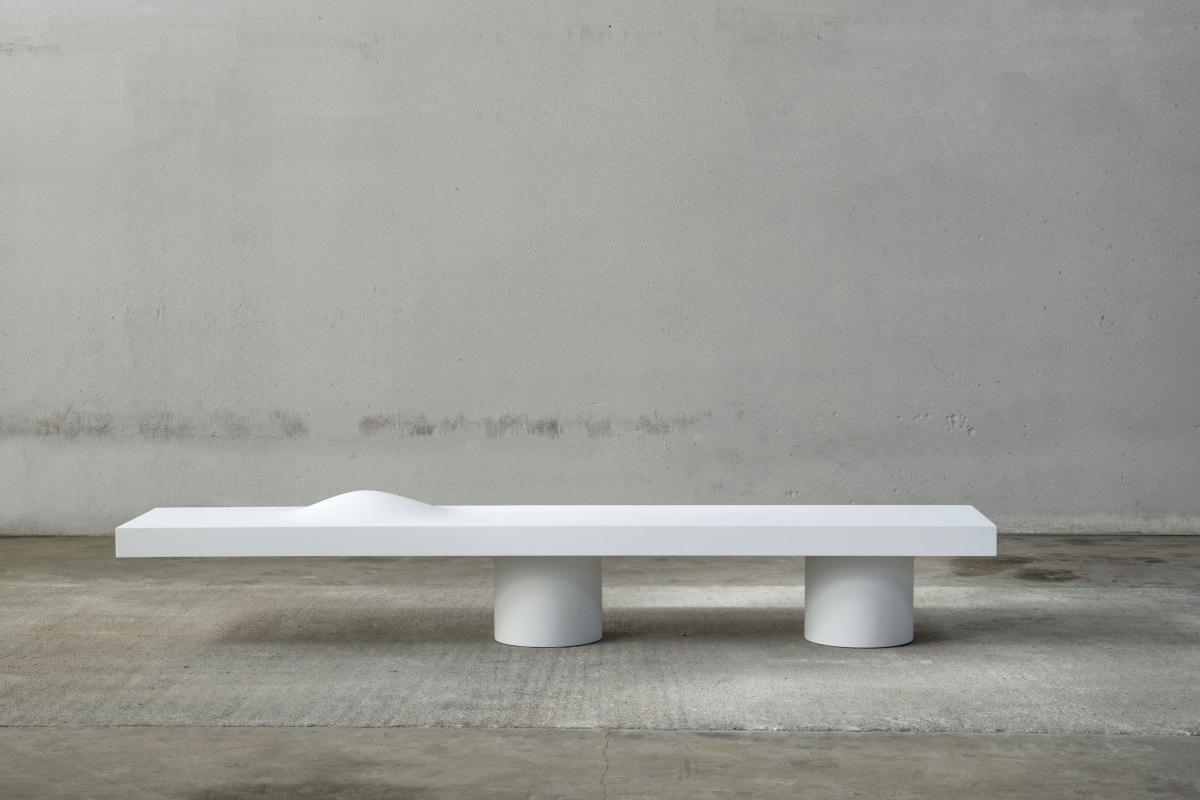
The “Distortion” Bench by Najla El Zein. Photo courtesy of Najla El Zein
Many of Najla’s other pieces blur the line between sculpture and furnishings. Her work really isn’t one or the other, sculpture or furniture, she says. For her it’s all about the feeling. “I don’t think of it as something that is separate. I think of my pieces as pieces that want to express something,” she says. “I use function as a tool of expression.”
She might design something you can sit on, like “Distortion 06,” and while it looks like a bench, and you can certainly sit on it, it’s not really about being a seat. “The function may be used in a certain way to adopt a certain gesture. That’s important to me—to be able to express a moment or a feeling. This is how I use function,” she says.
A version of this article originally appeared in Sixtysix Issue 07 with the headline “Najla El Zein.” Subscribe today.
